It’s that time of year when the delicious smell of roasting chestnuts fills the air. Jessie Watson Brown shares her tips for foraging, cooking and storing sweet chestnuts for year-round use.
Recently on a road trip through France, I happened to be in the Dordogne in sweet chestnut season, in mid-October. I live in Devon where on a good year we might get some fair sized chestnuts, but down in southern France they are massive! And so every spare space in the car was filled with bags of these wonderful nuts.
It’s defiantly worth doing a chestnut pick in the UK too, as the great thing about sweet chestnuts is that, unlike, say, a dandelion leaf, they actually really fill you! They are a delicious and versatile wild food, and are one of the few easily pickable wild carbohydrates.
You can roast them, boil them, or dry them for later storage.

A good few hours gathering and you can easily fill a few sacks – it’s worth going for the big ones.
Picking
It’s worth finding a tree with some real good sized chestnuts, so hunt around the woods until you find them. Make sure the ones you put in your gathering basket have no insect holes and are firm (if they feel spongy when you squeeze them then leave them in the woods).
The outer casing is very very spiky, so I tend to carry a stick around to try to minimise splinters, and a good ‘stamp and twist’ technique with your boots works well too. The aim is to get the chestnuts out the casing with minimum puncture wounds.

Often there will just be one or two bigger chestnuts in each prickly shell, those are the ones worth picking.
Storing
Once home, I put the whole lot into a bucket of water and any that float are thrown away – they generally have air in them from insect burrows and aren’t worth keeping. Lay them out as a single layer so they dont go mouldy – they should keep for about a week like this in a cool place. Alternatively you can freeze them whole.
Chestnuts have two shell layers. An outer, shiny, harder shell, then a thinner inner layer that is, when fresh, totally stuck to the chestnut. This inner layer is high in tannins and therefore tastes astringent and unpleasantly bitter.
Cooking
To roast chestnuts, make a slit or cross in the outer shell – this means that they don’t explode when they heat up. Then pop them on a tray in a medium oven for 20-30 minutes. Alternatively they are delicious straight on the embers of a fire. Keep them moving to avoid burnt patches.
Once roasted they should be soft and sweet inside, with both layers of shell coming away.

Roasted chestnuts – also a popular street food around the world.
Alternatively you can boil them from fresh, which can yield perfectly peeled chestnuts. Slit the chestnut and pop into boiling water for a few minutes. Remove them and carefully peel off the two layers – this is best done wearing rubber gloves (they will be hot!). The inner shell layer is easy to separate only when hot and reattaches once the chestnut is cooled so I tend to do them in batches of about 8 at a time.
Drying
For longer term storage, I like to peel and dry them. Whilst still fresh, peel off the outer layer. Halving the chestnut works well for this. I use a knife and as it’s so time consuming I tend to do it when chatting to friends… sometimes they offer to help which halves the work!
I then dry them fairly quickly, over a heat source like a woodburner, or in a dehydrator. This means the inner shell becomes papery and dry and simply flakes off.

The inner shell becomes papery and brittle and separates easily once the chestnuts are dried.
Dried chestnuts store for about a year well. Just soak overnight to rehydrate then boil and eat in soups, puddings, or ground for flour.

A good winter store. I don’t tend to worry if there are a few bits of papery inner shell left over. It’s not worth the time.
A friend came over and when I offered him some he adamantly refused saying he foraged some and found them disgusting! After talking we realised he had picked Horse Chestnuts…. Definitely not for eating! To tell them apart, the inedible horse chestnut outer casing is much less spiky, and each individual conker doesn’t have a hairy point, which sweet chestnuts do have.

Just to be clear – these are Horse Chestnuts and not to be eaten.

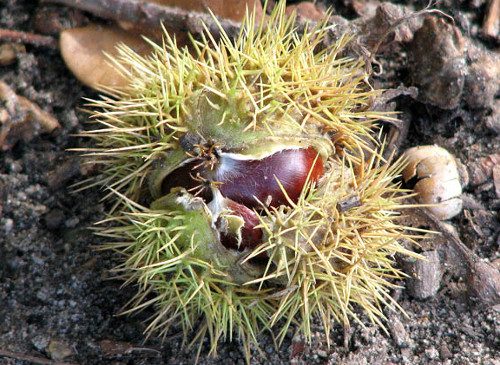

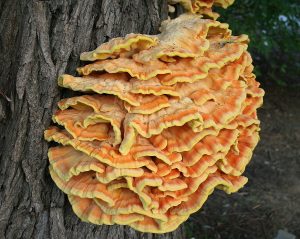
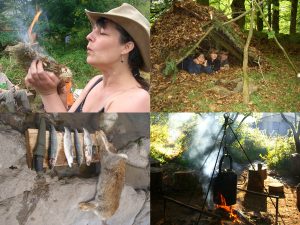
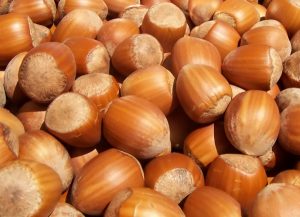
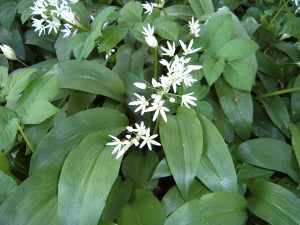
16 Comments
At last sensible advice on how to peel chestnuts, I’ve tried numerous different “guaranteed” online techniques, generally U.S and all rubbish maybe their nuts are different. Anyhow no more tears of frustration or vacuum packed, thanks.
Thank you. Very helpful as I live in south west France and didn’t know how to prepare and store them.
I’m so glad this is helpful, yes it has taken me years of all sorts of methods to finally settle on this one – and it works!
Do `em in a microwave. 90secs and you`re in heaven. Dont forget to spike them or they will explode and make the most horrendous mess. Sainsburys is a good place to get them but pricey. Any that are bit ” iffy” can go to the squirrels. They aren`t so choosey. Like ti feed them the nuts from my monkey puzzle tree, but thats another tale.
I am still mystified as to how to ‘if they feel spongy leave them’ as they are too spiky to squeeze! As for the stamp and turn technique – mine disappear into the earth. What’s the secret to be able to fill my gathering bag, please?
Once you have stamped or somehow got them out of the spikey bit, you then squeeze the whole individual chestnut – if its spongy then its best to leave it.
You could try stamping agains your other foot… or a long tool you take with you. I use a stick too, just a short stick and squatting on the ground. A gloved hand works well too – a good leather glove.
Hope that helps!
Hi, can you dry/store long term after boiling? I like the idea of boiling to remove all skins.
To Steve Wolf Rayner
I’ve never stored after boiling. But I imagine so long as you dry them thoroughly they will store fine.
To remove shells I don’t boil for long. A minute or so should work. So they aren’t particularly cooked anyway.
I don’t know whether it’s this year’s chestnuts that are particularly good. I’m really enjoying eating them raw. I prefer them with the inner skin on.
I was asked what I wanted for my birthday. Being right in the middle of the sweet chestnut season, it seemed a reasonable gift but what I got was beech nuts. Next year, I’ll gather my own.
Wear leather work gloves while picking, it makes all the difference.
How come some Google advice says never eat raw chestnuts? I’ve eaten them raw for years often with a touch of salt. Surely raw sweet chestnuts are safe to eat?
I think the advice is different between edible sweet chestnuts, and ‘conkers’ – and it looks like raw sweet chestnuts, whilst not poisonous as such, can cause problems for some: https://www.thespruceeats.com/raw-chestnuts-overview-1808316
Thank you for your excellent blog. I did an experiment and cooked the sweet chestnuts that floated to see if they were edible and found that there was 3 or 4 out of twenty that weren’t good. This compared to 2 or 3 out of twenty of the ones that didn’t float. So don’t be to hasty to throw out the ones that float. Thanks, again, Joy
Vg article to distinguish sweet chestnuts from ‘conkers’! I cut & cooked mine fir 20minsbut very hard to find large ones in Wivenhoe Woods.JCF.
We have a paper bag of chestnuts in their shells we collected and air dried from 2023. Can we still roast them in their shells or should we deshell first? Or are they all goners!?
Thanks